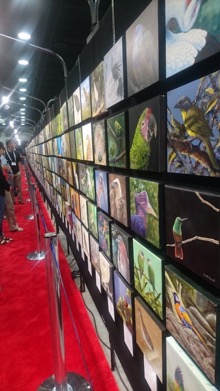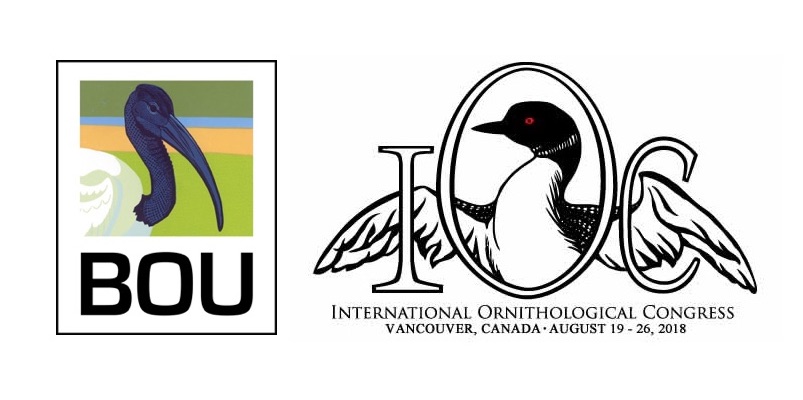
Promoting and facilitating avian conservation
Most conferences have a few unofficial themes that emerge. At the International Ornithological Congress 2018 (IOCongress2018), one clear theme was avian conservation; almost 20% of all symposia had ‘conservation’ in their title, while about 18% of open talk sessions did. Other symposia and sessions, while not so explicitly conservation-orientated, often also included talks that mentioned biodiversity conservation and climate or land-use change. As an early career population ecologist and conservation biologist, this was pretty exciting to me!
With delegates coming from across the globe and from multiple different types of organisations – universities, NGOs, government agencies, environmental consultancies – the IOC 2018 provided a great opportunity to network and share the latest ideas and information in avian conservation and avian research more broadly.
 The excellent plenary by Prof Peter Ryan (@Fitztitute) on some of the threats seabirds in the Southern Hemisphere face © Amanda Trask
The excellent plenary by Prof Peter Ryan (@Fitztitute) on some of the threats seabirds in the Southern Hemisphere face © Amanda Trask
Topics of talks and poster presentations covered directly conservation-focused themes, such as conservation translocations (@inexpectata ), captive breeding (@Aviaritrix), and use of supplementary feeding (@HelenClaireGath), as well as understanding extinction risks for suites of species such as tidal marsh birds (@ssts) and Malagasy forest birds (Marie Jeanne Raherilalao). However, talks from other research areas also yielded valuable and fascinating insights into topics such as variation in adult sex ratio and its implications for social behaviour and population viability (Jan Komdeur) and the difficulties with estimating inbreeding depression in wild populations (Pirmin Nietlisbach). The breadth of research areas covered by the IOCongress2018 was a major strength of the conference and was great for helping me see how my research fits into the bigger picture, as well as stimulating new ideas for future research. My own presentation showed the different threats contributing to the decline of a threatened population of red-billed choughs, and how we can use this information to develop management strategies. As well as providing a platform to promote my published research on a lethal recessive mutation causing blindness in the population (Trask et al. 2016) and quantifying genetic threats to populations (Trask et al. 2017), my talk gave me the opportunity to share research I am working on currently. I found this particularly valuable, as a great way to hear other researchers’ opinions and questions about my research ahead of formal peer-review.
 The ‘Silent Skies’ mural project by Artists for Conservation was unveiled at the IOC 2018 © Amanda Trask
The ‘Silent Skies’ mural project by Artists for Conservation was unveiled at the IOC 2018 © Amanda Trask
Science communication is an important topic to me and IOCongress2018 did an impressive job of promoting ornithology and science to the general public through its partnership with the Vancouver International Bird Festival. This also created an atmosphere of celebrating birds and the natural world throughout the conference. The presence of Artists for Conservation (@NatureArtists) at the IOCongress2018 meant that conservation communication was a natural part of the conference. The “Silent Skies” mural project – featuring a mosaic of all 678 endangered, critically endangered and extinct in the wild bird species on the IUCN red list – was a beautiful showcase of artistic talent but also a powerful reminder of why avian conservation is so important. I’m sure that some of information shared, new ideas formed, and connections made at the IOCongress2018 will contribute to future efforts to conserve this amazing avian biodiversity.
References
Trask, A.E., Bignal, E.M., McCracken, D.I., Monaghan, P., Piertney, S.B. & Reid, J.M. (2016) Evidence of the phenotypic expression of a lethal recessive allele under inbreeding in a wild population of conservation concern. Journal of Animal Ecology 85 (4) 879–891.
Trask, A.E., Bignal, E.M., McCracken, D.I., Piertney, S.B. & Reid, J.M. (2017) Estimating demographic contributions to effective population size in an age-structured wild population experiencing environmental and demographic stochasticity. Journal of Animal Ecology 86 (5) 1082-1093.
Blog posts express the views of the individual author(s) and not those of the BOU.
If you want to write about your research in #theBOUblog, then please see here.




